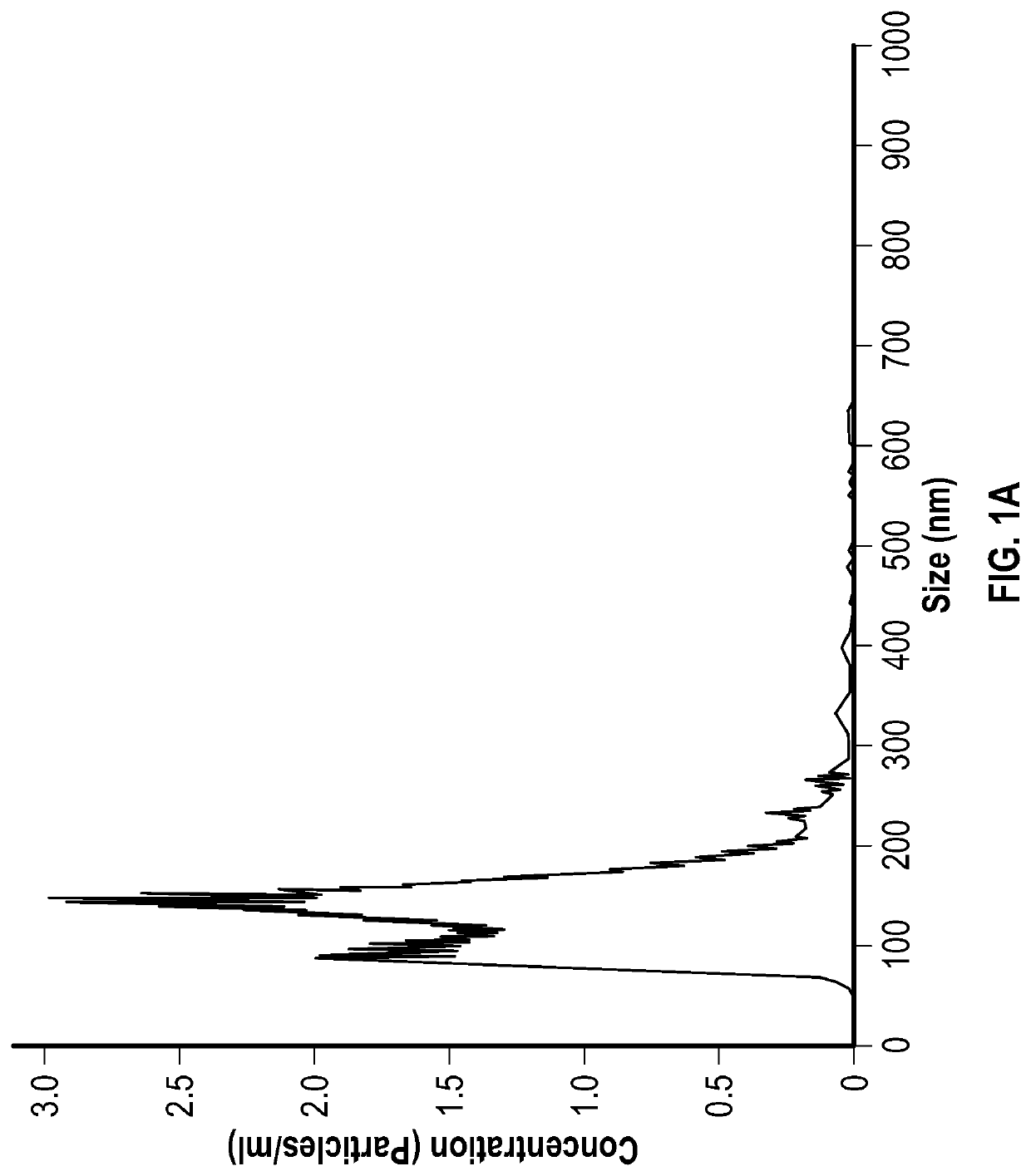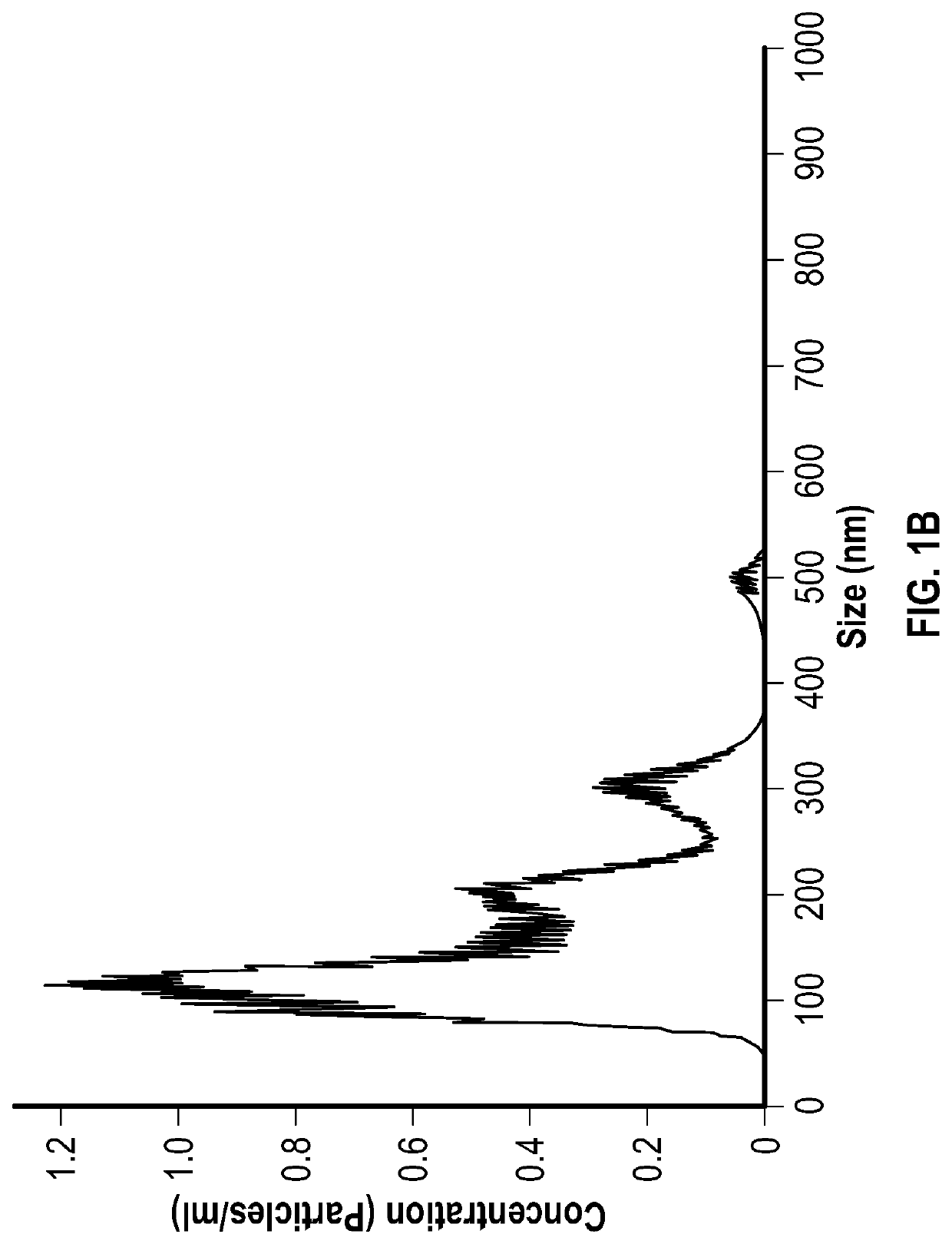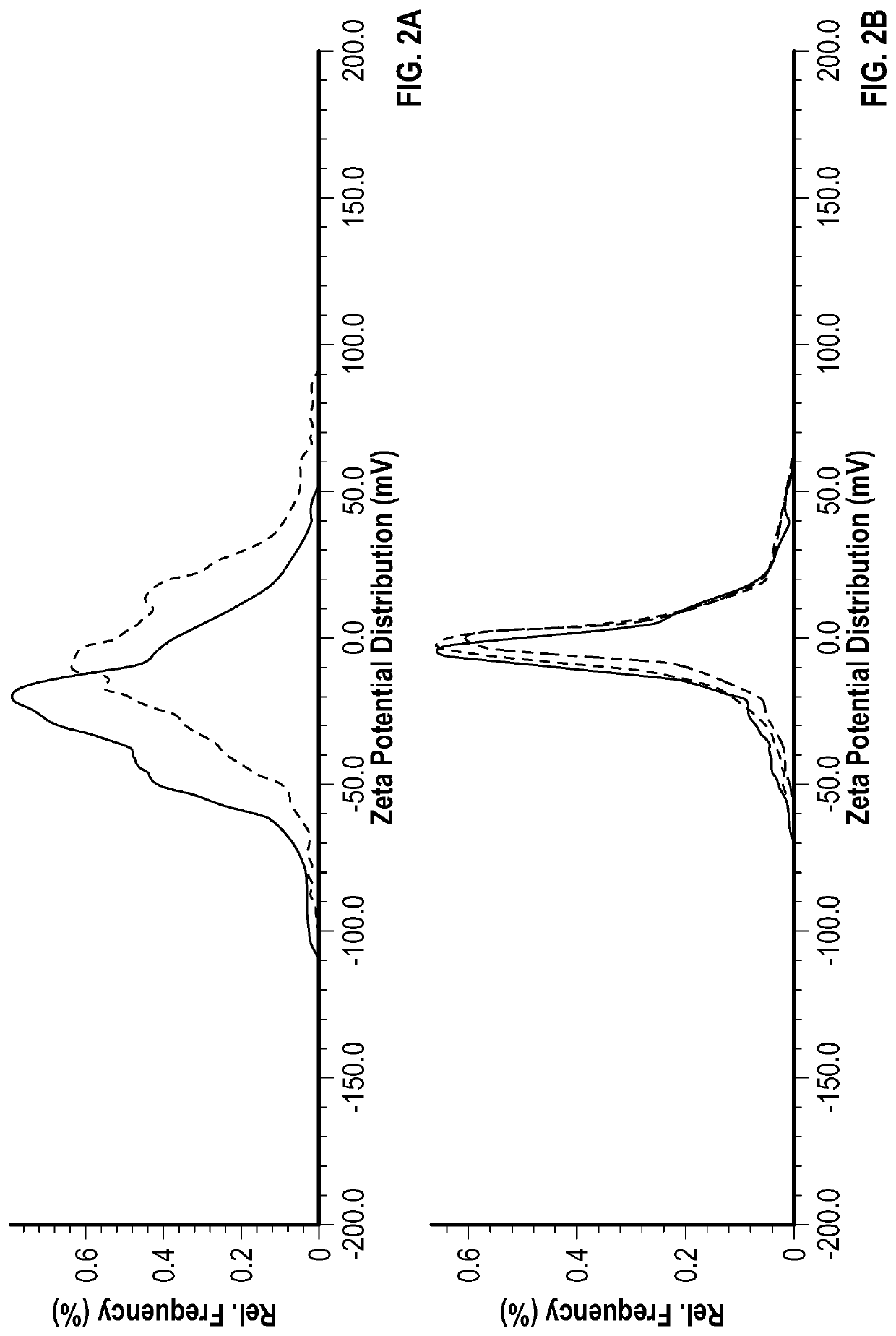Extracellular vesicles for inhalation
a technology of inhalation and vesicles, which is applied in the direction of drug compositions, genetic material ingredients, dispersed delivery, etc., can solve the problems of clogging of airways, significant phlegm production, and decreased mucus clearan
- Summary
- Abstract
- Description
- Claims
- Application Information
AI Technical Summary
Benefits of technology
Problems solved by technology
Method used
Image
Examples
example 1
[0121]Aims of the example were to isolate exosomes from the human mesenchymal stem cells (hMSC) and to effectively modify their surface with low-molecular-weight lipid-modified polyethylene glycol (lipid-PEG) to improve exosome properties of aerosolization and mucus penetration.
Fluorescent Labelling of hMSCs
[0122]Frozen bone marrow MSCs (Donor #163) were thawed before they plated directly into 15 T-175 flasks (1×106 cells for each flask) in EV-depleted complete culture media (CCM) with 10 ng / ml of human basic fibroblast growth factor (bFGF), passaged when they reached 80-85% confluency. Cells were pooled together before they were pelleted and resuspended in PBS, incubated in the dark with 2 μg / 1×106 cells Far-Red dye (excitation / emission ˜630 / 661 nm) (Cell Trace) for 20 min at the room temperature (this will label exosomes as Far-Red dye labels cytosolic proteins). After incubation, MSC culture media was added to stop the reaction and incubated further for another 5 min before pelle...
example 2
[0148]The aims of this example were to show the surface modification of exosomes can be effectively achieved and that genetically modified mesenchymal stem cell populations of bioengineered cells, over-expressing CFTR gene can be successfully established.
BT-20 and hMSC Cell Line Culture Techniques
[0149]BT-20 cells sourced as BT-20 human epithelial cells from ATCC® HTB-19™ were cultured in DMEM media supplemented with 10% FBS and 100 IU / ml of Penicillin / Streptomycin as complete condition media (CCM). Human Mesenchymal Stem Cells Donor No. 096 were used, the cells were cultured in Gibco's MEM Alpha Medium with 10% FBS and 100 IU / ml of Penicillin / Streptomycin and 1 ng / ml of human basic fibroblast growth factor (bFGF).
[0150]The feeding of the cells was done 3 days a week using aseptic technique, which was to remove spent media from culture flask with a pipette and add to waste bottle followed by replenishing of culture flask(s) with appropriate volume of fresh media (supplements include...
PUM
| Property | Measurement | Unit |
|---|---|---|
| molecular weight | aaaaa | aaaaa |
| molecular weight | aaaaa | aaaaa |
| size | aaaaa | aaaaa |
Abstract
Description
Claims
Application Information
 Login to View More
Login to View More - R&D
- Intellectual Property
- Life Sciences
- Materials
- Tech Scout
- Unparalleled Data Quality
- Higher Quality Content
- 60% Fewer Hallucinations
Browse by: Latest US Patents, China's latest patents, Technical Efficacy Thesaurus, Application Domain, Technology Topic, Popular Technical Reports.
© 2025 PatSnap. All rights reserved.Legal|Privacy policy|Modern Slavery Act Transparency Statement|Sitemap|About US| Contact US: help@patsnap.com



